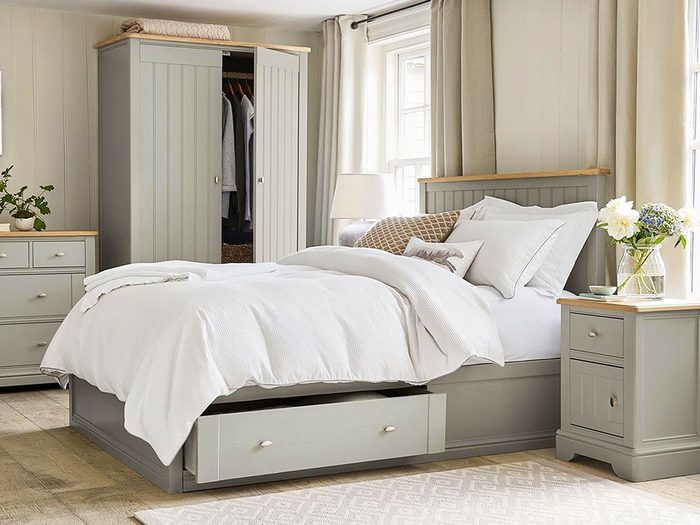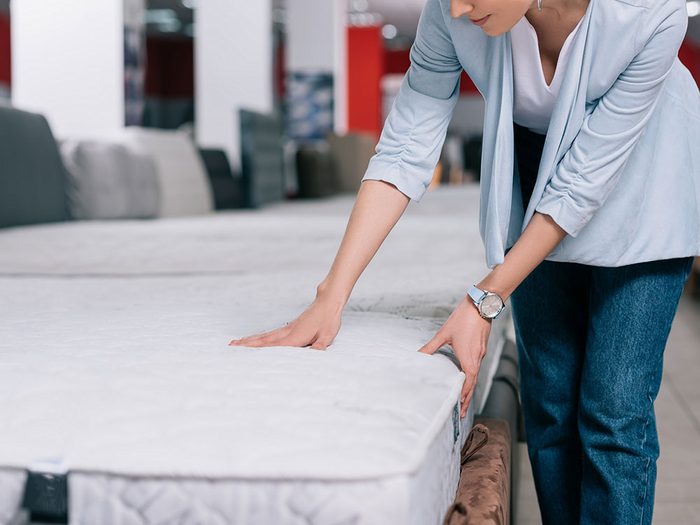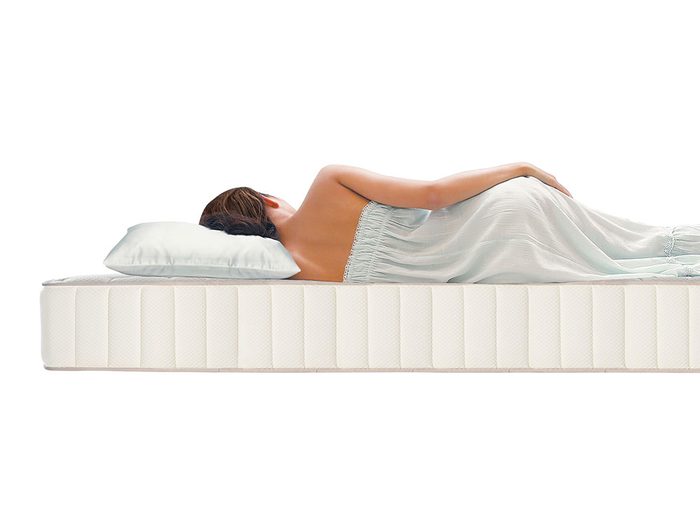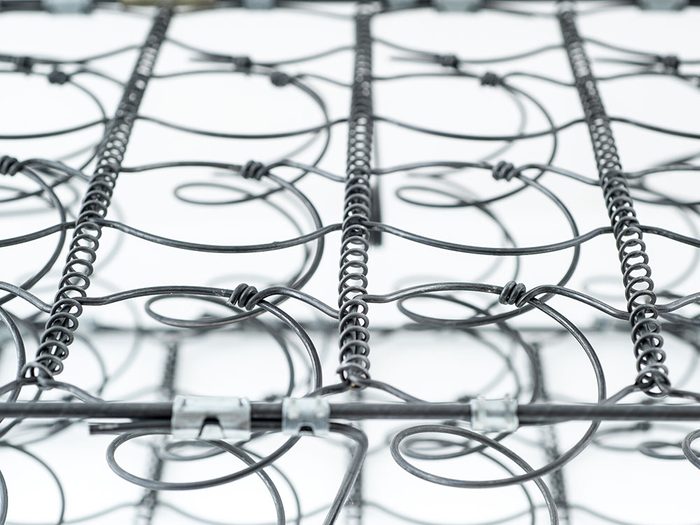
Buy Your Box Spring and Mattress in a Set
Box springs and mattresses that come in sets are built and fitted for one another. Separate units can cause problems. And since box springs absorb up to 50 per cent of the impact, using a well-fitted box spring can prolong the life of your mattress.

Avoid Box Foundations
Unlike box springs, these plain wooden platforms covered with fabric have no springs. They are usually meant to make a cheap mattress feel firmer and can actually cause the mattress to break down more quickly. Without box springs, the mattress ticking, padding and other upholstery can wear out more than twice as fast. Find out more thrifty ways to make everything you own last longer.

Don’t Assume a Firm Mattress is Best
There’s been a change of thinking when it comes to mattresses. Studies show that the long-held belief that firmer mattresses are best for people with back pain may not necessarily be true. Chiropractors say your spine should look the same when you’re lying down as it does when you’re standing. If you sleep on your side, a too-firm mattress may not have enough give to let your shoulder and hips sink into the mattress. Your body will be unnaturally compressed. Instead, you should look for a mattress designed to conform to the spine’s natural curves and to keep the spine in alignment when you lie down. The mattress should also distribute pressure evenly across the body to help circulation, decrease body movement and minimize the transfer of movement from one sleeping partner to the other.
Psst—these are the best sleeping positions for a good night’s sleep.

Choose the Right Coils
Learn about the four basic types of mattress coil systems so you can make an informed choice:
- The Bonnel Coil System: A system of hourglass-shaped coils tied together by thinner spiraling wire. The maximum number of coils in this system, often found in lower-priced name-brand mattresses, is 364 in a full-size mattress.
- The Continuous-Wire System: As the name suggests, this is made from a single wire, often more than 180 metres long. While the continuous coil tends to be strongest, it does not necessarily offer the most support.
- Individually Wrapped Coils: Sometimes known as Marshall or pocketed coils, these are encased in fabric. One advantage: Because they’re not connected, one sleeper’s movements don’t affect another sleeper in the same bed.
- Offset Coils: Like Bonnel coils, these are hourglass shaped, but the coils are squared off on top and bottom for maximum support.
Coil Conclusions: Whatever the type of system, coils should be tempered with heat or electricity for long-lasting springiness. The edge should have a sturdy wire or foam border for stability and to keep the edge firm. The higher the coil count, the more stable the mattress is. Most mattresses feature 300 to 800 coils, with 500 to 800 considered firm. But mattresses with lower coil counts can feel firm if the coil wire is thicker. (Wire thickness is referred to as the wire’s gauge. The higher the number, the thinner the wire. Look for a minimum of 14-gauge coil wire and 6-gauge border wire.) While firm, these low-coil-count mattresses can grow lumpy more quickly.
Next, get to know the dangers of sleeping on an old mattress.

Skimp on the Kids’ Mattresses
Yes, you read that right. Mattress manufacturers and retailers know how young parents dote on their children. They prey on this tendency to provide “the best that money can buy” by offering high-priced beds designed expressly for children. Top quality is fine when it comes to car seats, fresh food, and other things directly related to your child’s health and safety. But almost any moderately priced bed will give children proper support. So why buy the most expensive mattress for your six-year-old, when he will eventually outgrow it—if he doesn’t destroy it first by bed-wetting or trampolining? Check out seven more things you should keep in mind when mattress shopping.